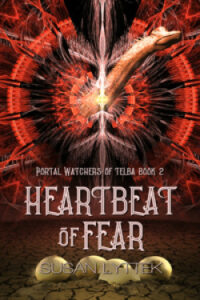by Susan A. J. Lyttek @SusanLyttek
Several years ago, I took a course on character development from a well-known Christian writer. Through the multiple session course, we were taught to create a psychological profile for our character, find pictures that looked like him or her, and create brief histories for prior to the
story’s commencement. It was all good and practical information. There was one major problem.
I couldn’t use it.
The technique reminded me of my high school days when a teacher would want an idea, then an outline, then an annotated outline, and then the final paper. I learned early on that working in that order would mean a less than satisfactory grade. So, once my idea was approved, I wrote the paper and then worked backwards. It’s the way I think. 
Deep down at my core, I am a pantser, a seat of the pants writer. Thorough preparation removes any desire to write the story. Sometimes planning even erases the story. It steals the fire I had when the idea germinated. I had to find a way to create multidimensional characters without storyboards and in-depth analysis.
Having taught writing for over twenty years to middle and high school students, I’d created a brief quiz to help them. As brief as it is, for my own stories I might answer a question or two (what color eyes or something like that) so that I don’t inadvertently change a detail halfway
through. Similar to outlines in high school, I use the questionnaire after the draft is done and before edits to make certain I keep each person consistent.
But what can a pantser do during the writing process in order to stay true to the characters and their personalities?
How a troublesome character can be a pantser’s best friend @SusanLyttek #writing #characters #ACFW Share on XThe title should give you a hint.
For the writer who writes without a plan, or without a thorough plan, you need to make sure your characters are troublesome.
What do I mean by that?
A good character, a troublesome character, will mess with where you thought the story was going by acting in a way that disrupts your storyline. For instance, in The Heartbeat of Fear, book two in the Portal Watchers, one of the supporting characters, the Prophet Nevv has no fear
of the Vil, the soul-less tools of evil. Unfortunately for him, the Vil he laughs at and almost scolds, is actually the queen in disguise. The same evil queen that he had refused years ago before he became a prophet.
Because he’s troublesome and refuses to cower, he sets in motion his capture. Because his troublesome behavior occurs in front of the one woman with the most power, it doesn’t merely injure him. Two of the watchers, Garth and Ne-tel, are also captured and tortured.
In my thoughts before I wrote the first draft of the story, I had the three of them fighting the forces of evil while Bern, the other watcher, and the brachiosaurus learned about a hidden country and secret past. But instead, Nevv had the nerve to not only be captured, but to refuse to
fight. That means Bern, the weakest of all the watchers had to rescue them all.
It’s not that Nevv is a bad man or even a bad prophet. He tries his best to be good. But his nature has an element of sardonic humor that causes problems.
He is troublesome.
For those who don’t plan, when your characters argue with you and change the story, that is character development. They are becoming their own people in spite of you. Then, when the draft is done, use an outline or tool to make sure they did their job.
 Susan A. J. Lyttek, author of the Portal Watchers YA series (books 1 and 2 released August 2023), is an award-winning writer and blogger. Having spent a couple decades homeschooling and tutoring, she now seeks refuge and sanity in the world of story. Learn more about her other books and projects at www.sajlyttek.com
Susan A. J. Lyttek, author of the Portal Watchers YA series (books 1 and 2 released August 2023), is an award-winning writer and blogger. Having spent a couple decades homeschooling and tutoring, she now seeks refuge and sanity in the world of story. Learn more about her other books and projects at www.sajlyttek.com

Comments 2
I’m working on a troublesome character. She’s old, cranky, and stuck in a nursing home. Thank you for helping me think about this.
I’m working on a troublesome character. She’s old, cranky, and stuck in a nursing home. Thank you for helping me think about this. huh